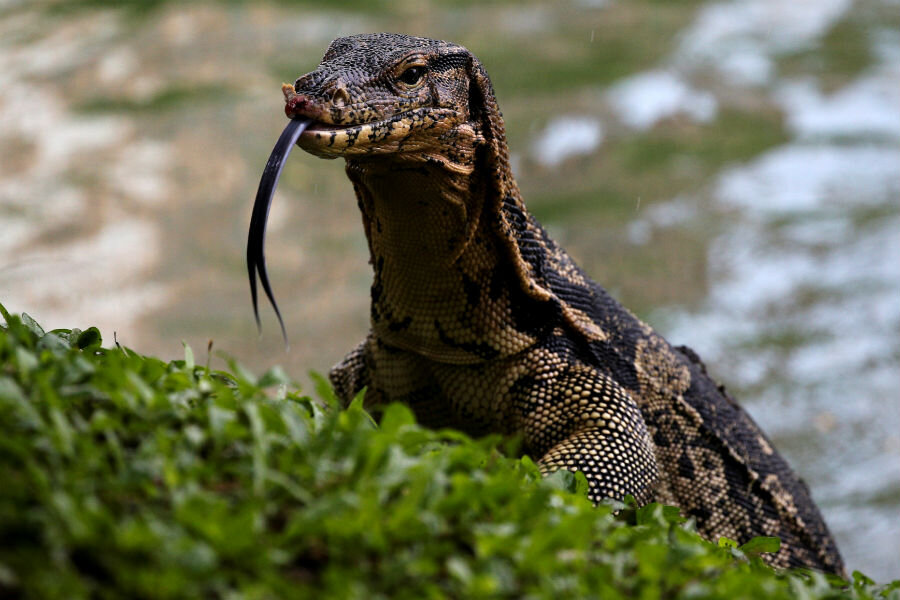Giant, 'spooky' monitor lizards prove too much for Bangkok park
City officials in the Thai capital of Bangkok began rounding up large monitor lizards in Lumpini Park on Tuesday, in an effort to reduce the number of the giant reptiles that enjoy free rein in the urban oasis.
Twelve staffers with the Bangkok Parks Administration (BMA) set out with ropes, sacks, and catfish, hoping to lure the lizards from the water, according to Channel NewsAsia. The reptiles, which mostly dine on birds, turtles, and dead fish, have injured cyclists on the park's bike paths after colliding with them. Authorities say they also damage the trees and landscape and spook the uninitiated.
"The monitor lizards are not afraid of people, and because of the clean environment of the park, they come out to walk around," Suwanna Jungrungrueng, the BMA's Director of Department of Environment, told the station. "Some people are startled by them so this is a safety issue."
"Our initial survey shows that there are about 400 of these lizards and they can be found in many places of the park. Those that we can see are the grown ones from 1 metre to 2.5 metres long. Some are as long as 3 metres," or about 9.8 feet, said Ms. Jungrungrueng, who added that the population has grown out of control.
Lumpini Park isn't the only magnet for mass tourism where the presence of wildlife has put authorities on edge. At the 2016 Olympics in Rio de Janeiro, where the official golf course was erected amid lagoons populated by a spectacular array of wildlife, Brazilian officials put five biologists at the ready in case of incidents involving the alligators that plied the lagoon's waters.
But the monitor lizards, a common name for variety of large lizards native to Africa, Asia, and islands in the Pacific Ocean, would seem an unusual case for a mass roundup. While fearsome-looking, they are harmless to humans and many Thai simply consider them nuisances – their nickname is a homonym for a common swear word. As Lumpini Park is located in the heart of Bangkok's financial district, the reptiles inhabit an oasis surrounded by concrete jungle, rather than a natural habitat encroached upon by human development. Some local residents, who view the lizards favorably, told Channel NewsAsia that the large reptiles help to control rat and snake populations.
Authorities said they hoped to catch about 40 on Tuesday, after which they plan to transfer them to a government-managed wildlife breeding center in Ratchaburi, about 80 miles south of the capital. Not everyone agrees that the center is well-equipped to take care of the animals.
Michael Cota, a Bangkok-based member of the International Union for the Conservation of Nature's specialist group for monitor lizards, told Reuters that the wildlife center was meant to be a place where animals deemed nuisances were looked after.
"They don't have the resources to take care of them and most of them end up dying. I'm sure after three or four months most of them will be dead," said Mr. Cota.
In spite of their abundance in Thailand's capital, species of monitor lizards that live elsewhere in Southeast Asia are facing more of a threat than previously thought, reported LiveScience in June, largely because of a demand for their skins.
Mark Auliya, a researcher at the Helmholtz Centre for Environmental Conservation in Leipzig and author of a June study warning of possible overexploitation of the animals, told LiveScience that despite international trade regulations, large Komodo dragons – a species of monitor lizard – were often illegally traded anyway.
"Quite often four-digit amounts are paid, for pairs occasionally even five-digit sums," he said.






